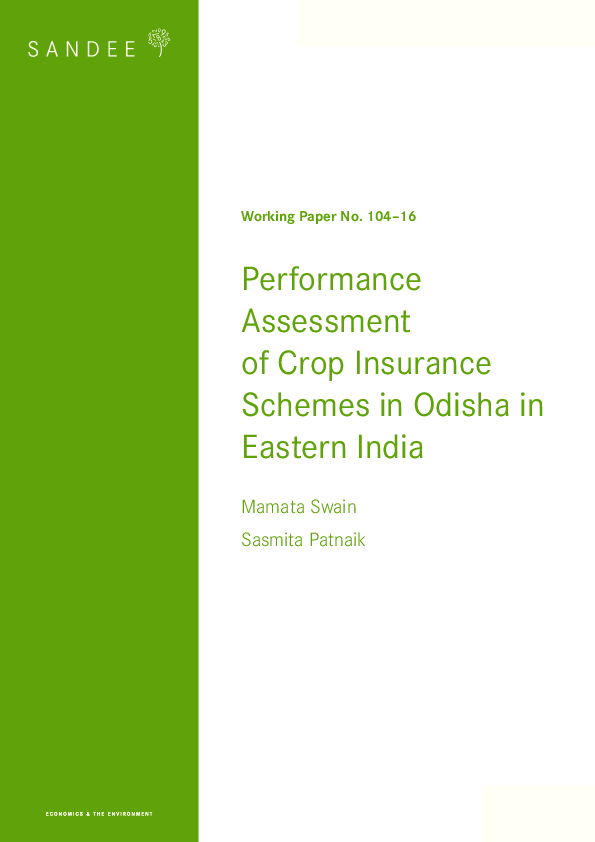Sandee Working Paper: Performance Assessment of Crop Insurance Schemes in Odisha in Eastern India

In a Sandee Working Paper, Mamata Swain and Sasmita Patnaik study two major crop insurance schemes operating in Odisha state of India: National Agricultural Insurance Scheme (NAIS) and the pilot Weather Based Crop Insurance Scheme (WBCIS). NAIS provides compensation for yield losses due to natural causes and covers all food crops and commercial crops. WBCIS provides coverage for paddy crop yield losses due to rainfall only. Both schemes are compulsory for loanee farmers and are also available for non-loanee farmers on voluntary basis. In this study, we analyze and compare various indicators including their coverage, financial performance and operational efficiency in acting as a safety net to the farmers when they experience crop losses. The study uses both secondary data and primary data. While the secondary data on various performance indicators are for the state of Odisha as a whole, the primary data for the study come from the Bolangir and Kalahandi districts located in drought-prone western Odisha. Applying a multi-stage sampling method, the sample includes 100 households using WBCIS from the Bolangir district and 100 households using NAIS from the contiguous Kalahandi district. Primary data were collected using a structured household questionnaire via the direct interview method between October 2011 and May 2012.
The results show that the area under crop insurance in these two schemes has increased from 10 to 16% of the gross cropped area in Odisha state during 2000-2012 but 84% is still not covered. This increase in coverage is mainly due to increase in the number of loanee farmers. The area under crop insurance by non loanee farmers has substantially declined over time in the case of both NAIS and WBCIS. NAIS is a large insurance scheme which covers 96% whereas WBCIS being a pilot scheme covers only 4% of the area insured by these two schemes in 2012. The study reveals that WBCIS performs better than NAIS as indicated by the higher adoption rate, the higher percentage of farmers benefited, the lower premium, faster claim payment, and the frequent indemnity payment. However, WBCIS covers only paddy crop losses due to deficit or surplus rainfall. In a frequently disaster-affected state like Odisha, where reasons for crop failure are many, there is also a need for multi-peril crop insurance schemes like NAIS. Therefore, both the schemes should continue and complement each other. The public sector may address catastrophic risk and provide multi-peril insurance where the subsidy requirement is high while the private sector could be brought into to provide insurance products for less severe events and for individual, independent, idiosyncratic and localized risk.
Click here for more information on sandeeonline.org.
